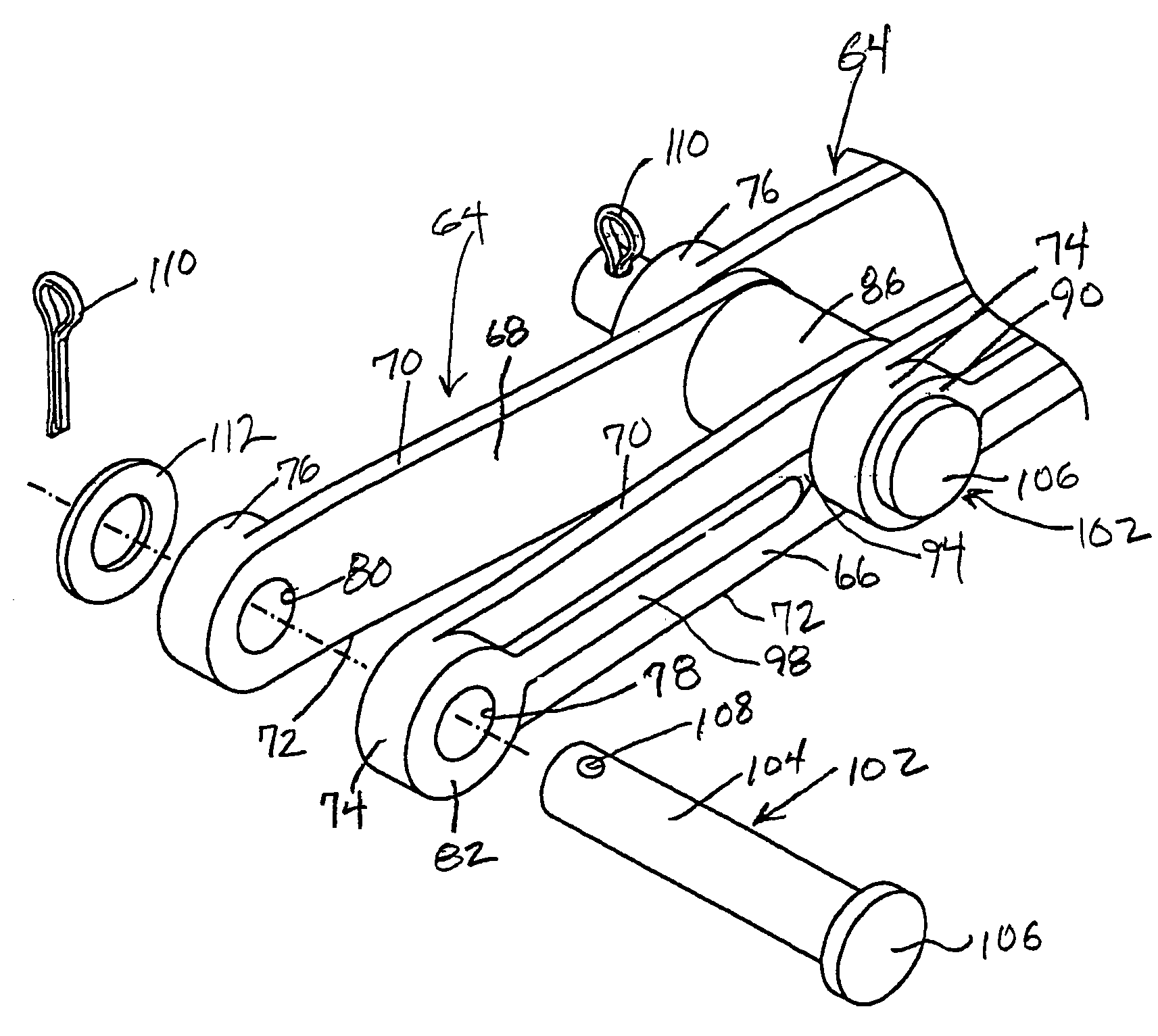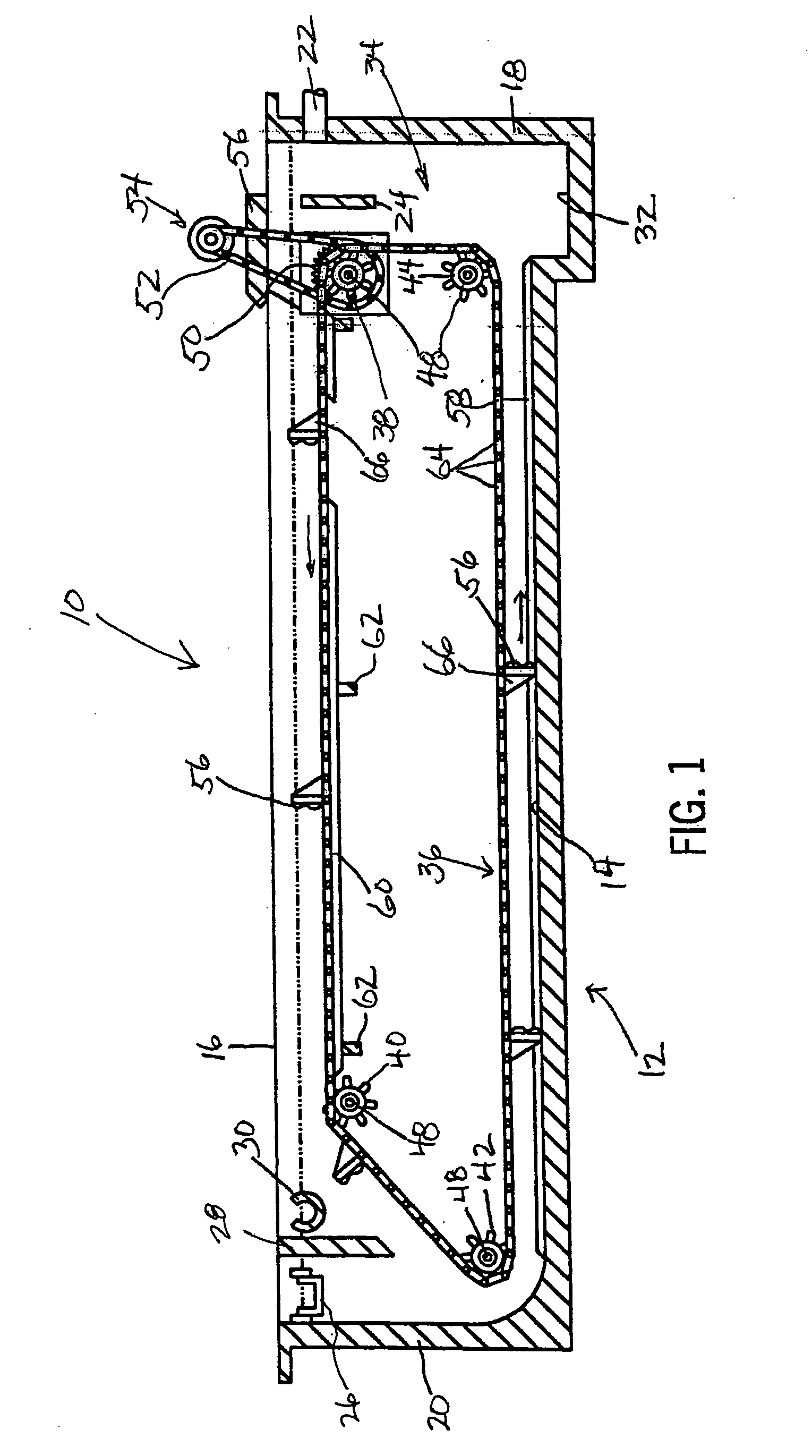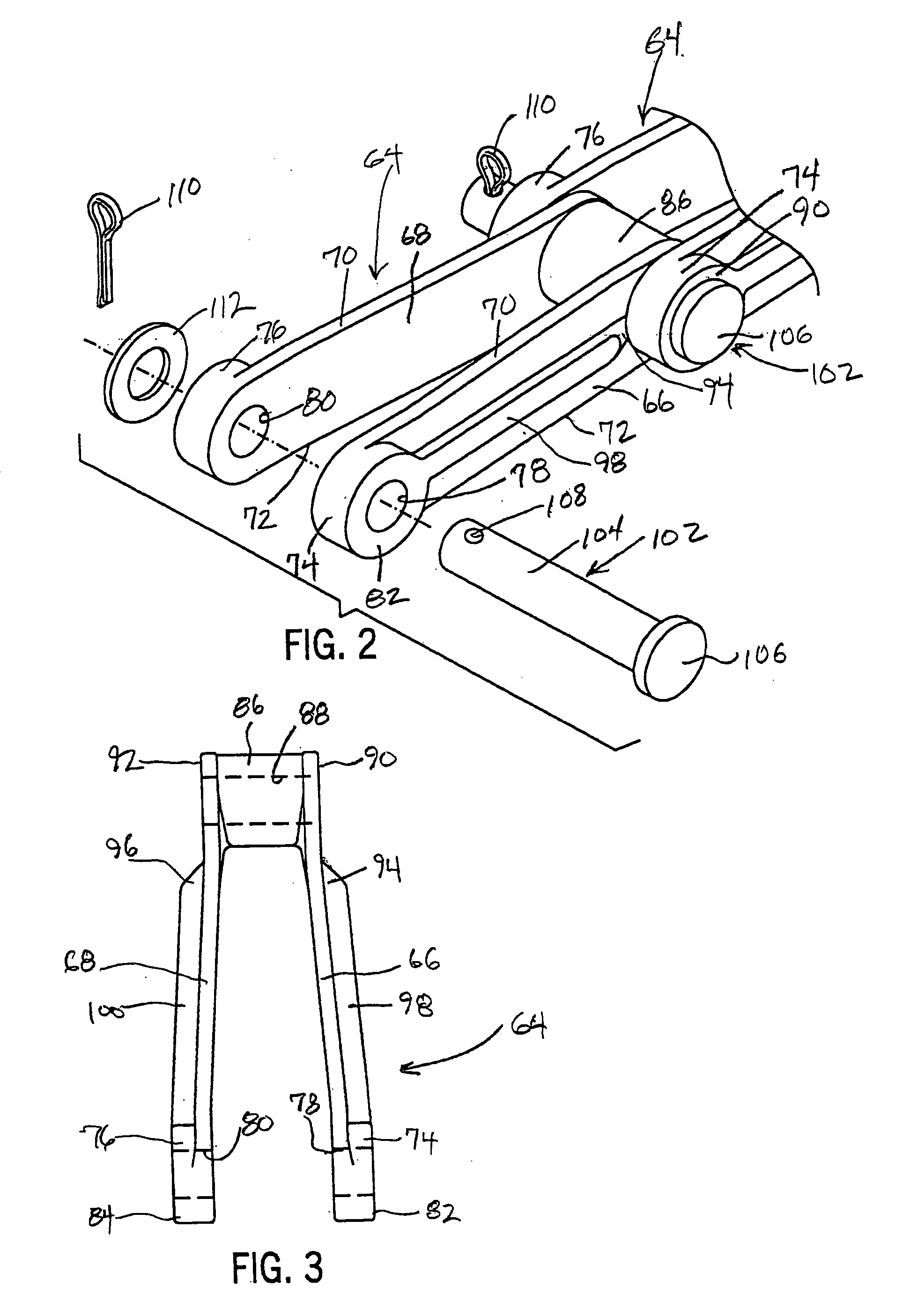Investment cast, stainless steel chain link and casting process therefor
a technology of investment cast and chain link, which is applied in the direction of driving chains, separation processes, and foundation moulding apparatus, etc., can solve the problems of chain with significant limitations in ultimate strength and working load (6,000 pounds), chain suffers from rapid wear and loss of strength, and abrasion wear, so as to achieve more efficient manufacture of attachment links, prevent heat concentration and formation, and eliminate shrinkage and dimensional variations
- Summary
- Abstract
- Description
- Claims
- Application Information
AI Technical Summary
Benefits of technology
Problems solved by technology
Method used
Image
Examples
Embodiment Construction
[0049] Illustrated in FIG. 1 is one type of a sediment removal or wastewater treatment apparatus 10 which embodies the chain construction of the invention, and which functions to remove waste material such as settlable solids or sludge, grit, trash, debris and floatable waste or scums from wastewater, although other liquids could be treated.
[0050] The wastewater treatment apparatus 10 includes a primary sedimentation or settling tank 12 which is usually formed with reinforced concrete or steel. The tank 12 includes a bottom 14, a pair of opposite sidewalls 16 (one is shown), an influent endwall 18, and an effluent end wall 20, which together defines the tank 12. A conduit 22 extends through the influent endwall 18 for delivering wastewater into the tank 12. A first baffle 24 extends across the top of the tank 12, between the sidewalls 16 and downwardly in front of and somewhat below the conduit 22 to minimize the movement and turbulance created by the influent flow to less than 1 f...
PUM
| Property | Measurement | Unit |
|---|---|---|
| length | aaaaa | aaaaa |
| heat dispersing | aaaaa | aaaaa |
| temperature | aaaaa | aaaaa |
Abstract
Description
Claims
Application Information
 Login to View More
Login to View More - R&D
- Intellectual Property
- Life Sciences
- Materials
- Tech Scout
- Unparalleled Data Quality
- Higher Quality Content
- 60% Fewer Hallucinations
Browse by: Latest US Patents, China's latest patents, Technical Efficacy Thesaurus, Application Domain, Technology Topic, Popular Technical Reports.
© 2025 PatSnap. All rights reserved.Legal|Privacy policy|Modern Slavery Act Transparency Statement|Sitemap|About US| Contact US: help@patsnap.com



